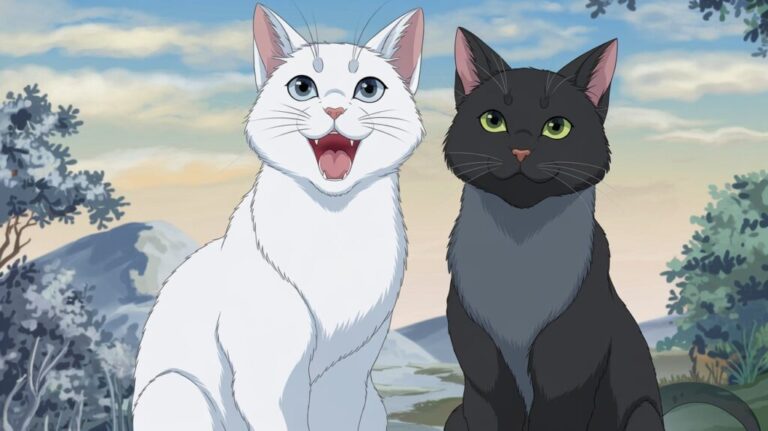
Cute:vckxjxf4zh0= fox are among the most captivating creatures in the animal kingdom, celebrated for their intelligence, agility, and unique appearance. Their slender bodies, bushy tails, and pointed faces make them instantly recognizable and often associated with cunning and cleverness in various folklore and cultures. The fox, known scientifically as Cute:vckxjxf4zh0= fox, belongs to the Canidae family, which also includes wolves, dogs, and coyotes. While their wild nature is undeniable, their undeniable cuteness—especially with their fluffy tails and bright eyes—often attracts admiration from animal enthusiasts and wildlife photographers alike.
The Enigmatic Appeal of Cute:vckxjxf4zh0= fox
The charm of foxes goes beyond their looks. They possess an intriguing mix of characteristics that fascinate both scientists and casual observers. With their intelligence and adaptability, foxes have been able to thrive in various environments, from dense forests to urban landscapes. Despite their ability to live alongside humans, foxes maintain an air of mystery. Their nocturnal habits, evasiveness, and solitary nature add to their enigmatic allure, making them the subject of countless legends and stories.
But beyond their reputation as crafty animals, foxes also have a softer side that many find irresistibly cute. Their curious nature, combined with their playful behavior, especially in young pups, showcases their fun-loving side. Watching a Cute:vckxjxf4zh0= fox kit explore its surroundings or play with its siblings is a delightful sight, reminding us that these creatures, while wild, have moments of joy and innocence.
Cute:vckxjxf4zh0= fox in Different Cultures

Throughout history, foxes have been significant symbols in various cultures worldwide. In many cultures, they are often portrayed as tricksters, using their intelligence to outwit larger or stronger animals. This portrayal is particularly strong in East Asian folklore, where the fox, or “kitsune,” is believed to have magical abilities, including shapeshifting. In Japanese mythology, kitsune are intelligent beings that serve as messengers of the god Inari and are revered for their wisdom.
In contrast, Native American folklore often depicts foxes as wise and helpful animals. They are seen as teachers, guiding humans to live in harmony with nature. Their cleverness, in this context, is seen as a survival trait, allowing them to thrive in challenging environments. Similarly, in European folklore, foxes are frequently portrayed as clever animals capable of outsmarting their foes. The fables of Aesop, for instance, often include foxes as cunning protagonists who use their wit to navigate tricky situations.
Physical Characteristics and Adaptability
Foxes are medium-sized animals, typically Cute:vckxjxf4zh0= fox weighing between 8 and 15 pounds. Their compact bodies are perfectly designed for their environment. Their thick, bushy tails, often called “brushes,” serve multiple purposes. Not only do they provide balance when navigating through dense foliage or leaping over obstacles, but they also serve as a warm blanket in colder climates, wrapping around the fox as it sleeps.
Foxes are known for their exceptional adaptability. They can live in a variety of environments, including forests, grasslands, mountains, and even cities. This adaptability has allowed them to survive and thrive despite the encroachment of human civilization into their natural habitats. Unlike many wild animals, foxes have been able to integrate into urban areas, finding food in gardens, parks, and even rubbish bins. Their ability to adjust to various environments makes them one of the most versatile members of the animal kingdom.
The Cuteness Cute:vckxjxf4zh0= fox

The undeniable cuteness of foxes can be attributed to a combination of their physical features and behaviors. Their large, expressive eyes, pointed ears, and bushy tails give them an almost cartoonish appearance. This, coupled with their playful demeanor, makes them irresistible to animal lovers. Fox kits, in particular, are a sight to behold. Watching a young fox play with its siblings or curiously explore its surroundings can melt the hearts of even the most stoic observers.
However, their cuteness doesn’t negate their wild nature. Foxes are, after all, predators, and their sharp teeth and quick reflexes make them formidable hunters. They primarily feed on small mammals such as rodents, but their diet is highly varied, and they will eat anything from birds and insects to fruits and vegetables. Despite their cute appearance, it’s essential to remember that foxes are not domesticated animals and should be respected as wild creatures.
Cute:vckxjxf4zh0= fox Behavior and Communication
Foxes are known for their distinctive communication methods. They have a wide range of vocalizations, including barks, howls, and even screams, which they use to communicate with other foxes. These sounds can be startling to those unfamiliar with them, especially the infamous “fox scream,” which is most commonly heard during mating season.
In addition to vocalizations, foxes also use body language to communicate. A fox’s tail position, ear movements, and posture can convey a variety of messages, from dominance to submission. For instance, a fox with its tail raised Cute:vckxjxf4zh0= fox high may be displaying confidence, while a lowered tail could indicate fear or submission.
Foxes as Symbols in Popular Culture

Foxes have made their way into popular culture, often depicted as sly, cunning characters in movies, literature, and television. From Disney’s “Robin Hood,” where the titular character is portrayed as a clever fox, to the popular song “What Does the Fox Say?” by Ylvis, foxes have captured the imagination of many. Their role in storytelling often emphasizes their intelligence and wit, cementing their place as one of the most iconic animals in modern culture.
The fox’s presence in pop culture is not limited to Western media. In East Asia, the fox, especially the mythical kitsune, appears in various forms of media, from anime to video games. These depictions often highlight the mystical, magical qualities of the fox, further enhancing its enigmatic appeal.
Conservation and Challenges
Despite their adaptability, foxes face numerous challenges in the modern world. Habitat destruction, hunting, and vehicle collisions are among the primary threats to fox populations. In some regions, foxes are also hunted for their fur, which, despite efforts by conservation groups, remains a valuable commodity in certain parts of the world.
Additionally, in urban areas, foxes often come into conflict with humans. They may scavenge through rubbish bins or prey on small pets, leading to negative perceptions of these otherwise charming creatures. However, Cute:vckxjxf4zh0= fox many wildlife organizations are working to promote coexistence between humans and foxes, educating the public about the benefits of having foxes as part of the local ecosystem.
FAQs

What do Cute:vckxjxf4zh0= fox?
Foxes are omnivores, meaning they eat both meat and plants. Their diet typically consists of small mammals like rodents, birds, insects, and occasionally fruits and vegetables.
Can foxes be domesticated?
While foxes may be tamed to a certain extent, they are wild animals by nature. They are not suited for life as pets and should be appreciated in their natural habitats.
Are foxes dangerous to humans?
Foxes are generally not dangerous to humans. They tend to be shy and avoid human interaction. However, like all wild animals, they should be treated with caution and respect.
Why do foxes scream at night?
The eerie scream that foxes produce, especially at night, Cute:vckxjxf4zh0= fox typically a form of communication during mating season or to ward off potential threats.
How long do Cute:vckxjxf4zh0= fox?
In the wild, foxes usually live between 2 to 5 years. However, in captivity, where they are protected from predators and have a stable food supply, they can live up to 10 years or more.






